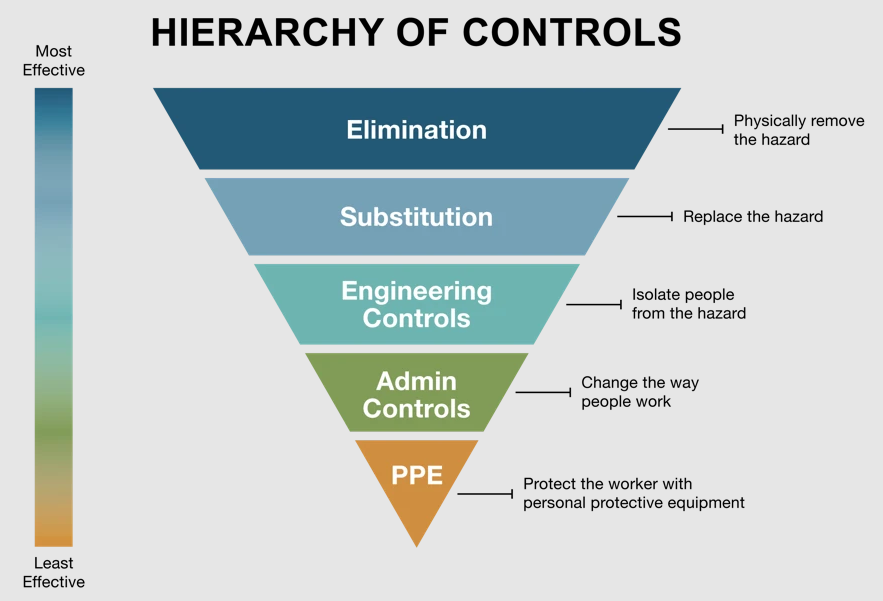Emory has a commitment to its faculty, staff, and students to keep them safe while they conduct research. One type of hazard found while conducting research activities is airborne contaminants. This includes chemicals, animal dander, physical hazards, including nanoparticles, and/or biological agents.
Emory uses the “Hierarchy of Controls” to minimize employee exposure to hazards, including airborne contaminants. When eliminating or substituting a process that produces an airborne hazard is not possible, the most effective method to minimize respiratory hazards is the use of engineering controls.
One example of an engineering control is a chemical fume hood. Chemical fume hoods reduce a researcher’s exposure by pulling contaminated air up and away from their breathing zone. However, engineering controls are not always feasible, and some airborne contaminants are so hazardous that an engineering control alone is not enough to ensure employee protection. In these instances, respiratory protection may be required according to Emory University’s Respiratory Protection Program.
Below are examples of research at Emory that require respiratory protection:
- Necropsy of large animals, such as pigs, due to formaldehyde exposure
- Parkinson’s Disease research using MPTP as a model.
How does the Environmental Health and Safety Office (EHSO) know if your research requires respiratory protection? EHSO conducts exposure assessments that allow us to evaluate potential employee exposure and compare it to established standards. If the employee’s exposure is close to or above established standards and engineering controls are not feasible, EHSO will advise on respiratory protection, including the type of mask and filter cartridges to best address your needs.
Do you have questions about respiratory protection? Email us at ehso@emory.edu.


